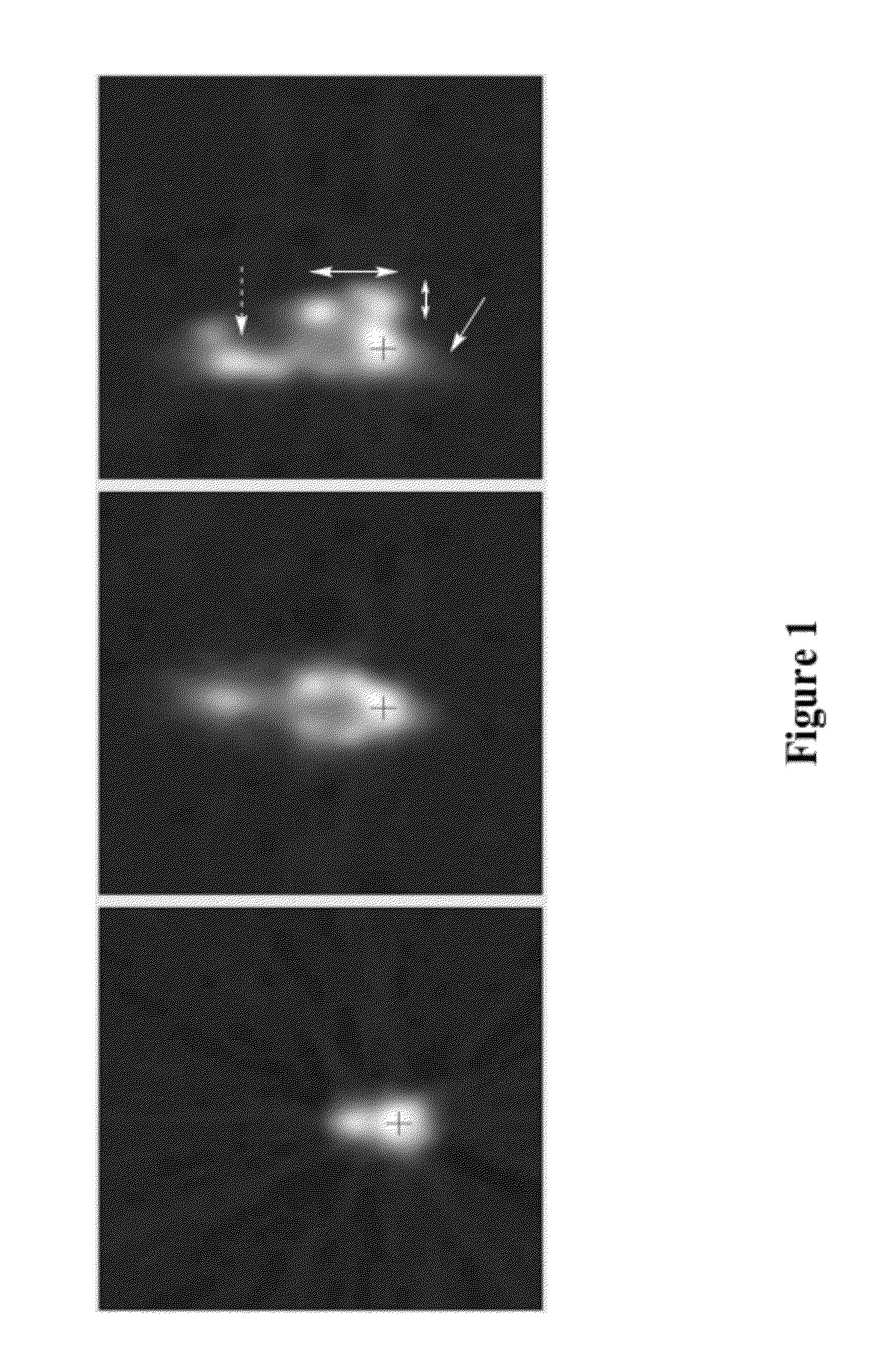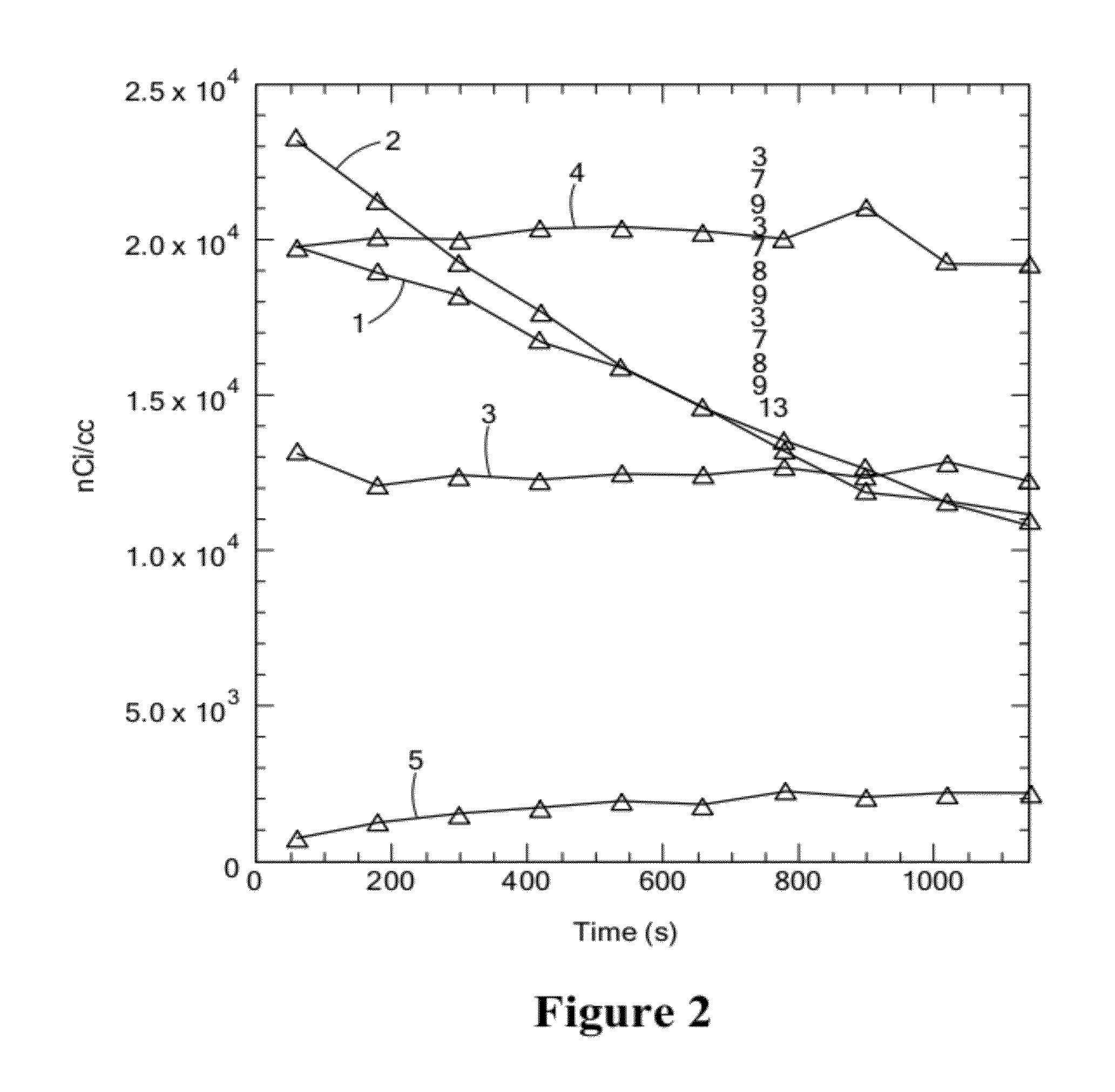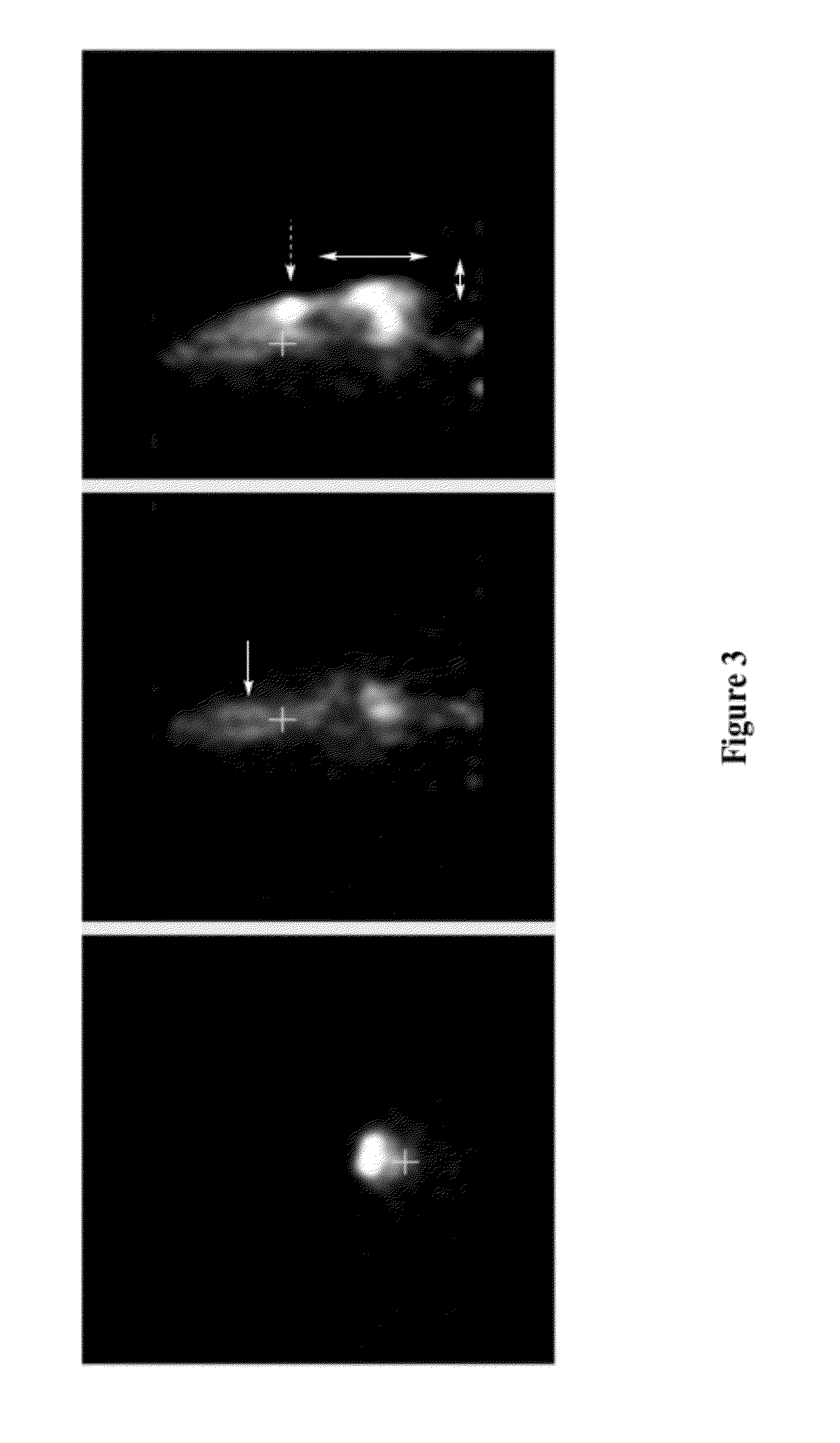Treatment of meningeal and neural diseases
a technology for meningeal and neural diseases, applied in the field of diagnosis and treatment, can solve the problems of ineffective outside anesthesiology and well-studied direct administration of conventional drugs into cs
- Summary
- Abstract
- Description
- Claims
- Application Information
AI Technical Summary
Problems solved by technology
Method used
Image
Examples
example 1
Behavior of Albumin and RNAse after Intrathecal Administration
[0274]Model macromolecules, bovine serum albumin and RNAse, were labeled with I-124 and injected into anesthetized male and female SD rats into cisterna magna through the atlanto-occipital membrane. Rats were immediately placed on the imaging bed of MicroPET P4 imager.
[0275]Imaging data acquisition started immediately after the injection and continued for 20 min. The data were reconstructed as dynamic sequences, 2 minutes per frame. Then, rats were reimaged at 2, 4, 8, and 24 hours. Image analysis demonstrated that:[0276]the injected solution rapidly distributes in CSF, including areas well beyond brain and spinal cord (presumably along major nerves), see FIGS. 1 and 2.[0277]The model molecules stay in the CSF compartment, with very slow transfer to the outside that apparently depends on the molecular weight, see FIGS. 3 and 4.
example 2
[0278]This Example sets forth the procedure used to determine the size of the drug molecule that would enable its optimal retention in CSF, synthesize a model conjugate, and evaluate in animal models drug distribution in the meningeal compartment, efficacy against meningeal cancer spread, and safety.
Procedure
[0279]In order to determine the optimal molecular (hydrodynamic) size of the drug conjugate and synthesize a model chemotherapeutic conjugate of that size, the following steps are taken:[0280]1.1. Synthesize carrier molecules of PHF of varying size, from 3 to 15 nm, labeled with 124I.[0281]1.2. Investigate the dependence of the retention of radiolabeled molecules of 1.1 in CSF on the molecule size (rats and monkeys, PET imaging). Select the optimal carrier molecule size.[0282]1.3. Synthesize a model conjugate of PHF and camptothecin of the optimal size, as determined in 1.2.
[0283]In order to evaluate the efficacy and safety of the model conjugate in an animal model of meningeal ...
example 3
Investigation of large molecule translocations in CSF by PET with 124I
[0296]Applicant's studies described in this Example are also described by Belov et al. and Papisov et al, Abstracts of the annual meeting of the Society of Nuclear Medicine, Toronto, 2009. With the growing number of biotechnology products entering preclinical and clinical studies, PET imaging of slow pharmacokinetics (PK) is playing an increasingly important role. Among all currently available positron emitters suitable for long-term (several days) PET studies, 124I has the longest physical half-life (4.2 d). The objective of this Example is to exemplify the properties of 124I as a “non-pure” positron emitter translate into data quality suitable for PK studies.
[0297]Imaging was performed using MicroPET P4. Spatial resolution (full width at half maximum, FWHM) was studied using a line 124I source (Ø=0.19 mm) in water. A 51×127 mm cylindrical phantom was used to evaluate the count-rate performance and coincidence de...
PUM
| Property | Measurement | Unit |
|---|---|---|
| Slice thickness | aaaaa | aaaaa |
| molecular weight | aaaaa | aaaaa |
| hydrodynamic diameter | aaaaa | aaaaa |
Abstract
Description
Claims
Application Information
 Login to view more
Login to view more - R&D Engineer
- R&D Manager
- IP Professional
- Industry Leading Data Capabilities
- Powerful AI technology
- Patent DNA Extraction
Browse by: Latest US Patents, China's latest patents, Technical Efficacy Thesaurus, Application Domain, Technology Topic.
© 2024 PatSnap. All rights reserved.Legal|Privacy policy|Modern Slavery Act Transparency Statement|Sitemap



